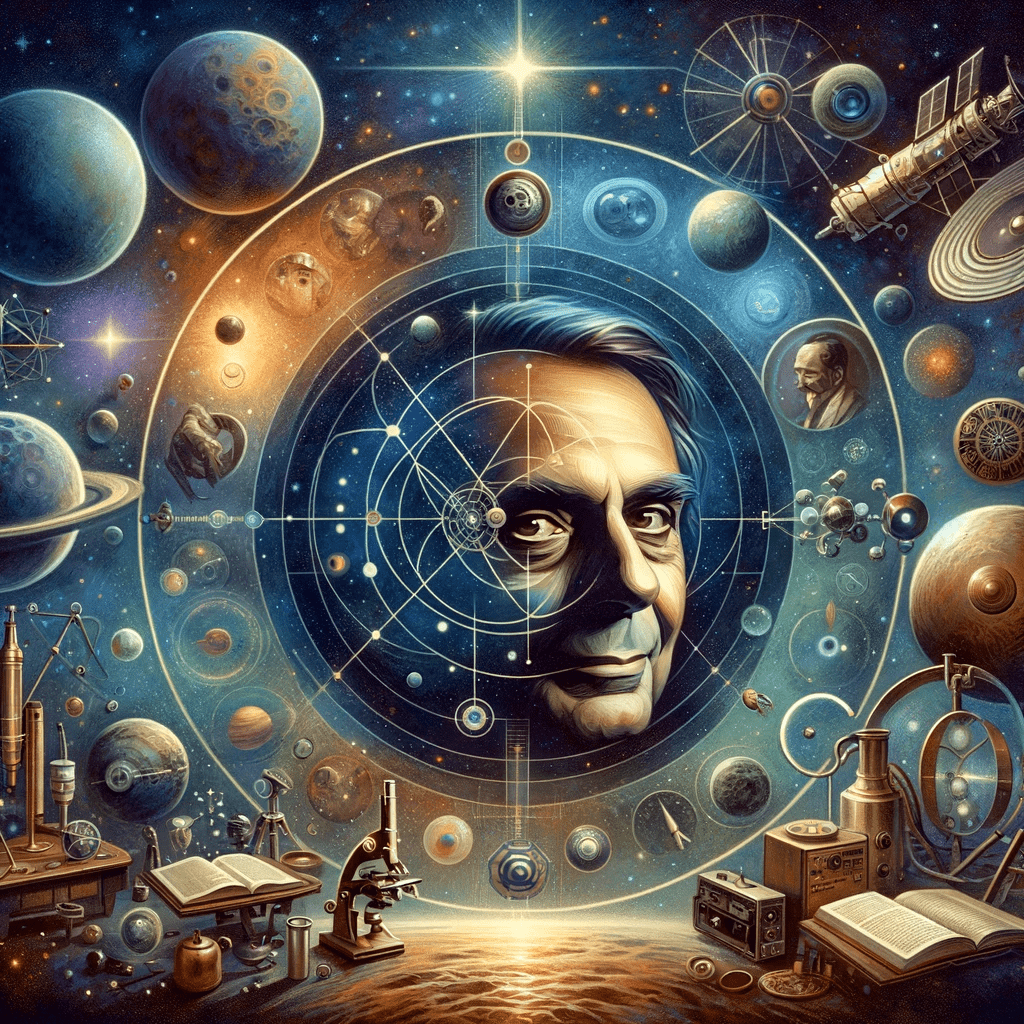Carl Sagan

Carl Sagan (1934-1996) was an American astronomer, cosmologist, astrophysicist, author, and science communicator. He was a popular and influential figure in the field of astronomy and science communication, and he is perhaps best known for his work on the television series “Cosmos” and his popular science books.
Carl Sagan earned his Bachelor’s degree in physics from the University of Chicago in 1955 and went on to earn a Master’s degree in physics and a Ph.D. in astronomy and astrophysics from the same institution. He went on to work as a research associate and assistant professor at the University of California, Berkeley, and later became a professor of astronomy and space sciences at Cornell University.
Sagan’s Relationship to UAP and UFO:
Sagan was interested in the search for extraterrestrial life and the possibility of encountering intelligent beings from other planets. He was skeptical of claims of UFO sightings and encounters, however, and argued that most sightings could be explained by natural phenomena or human error. He was particularly critical of the so-called “ancient astronaut” theory, which suggests that aliens visited Earth in ancient times and influenced human civilization.
Sagan was involved in several projects related to the search for extraterrestrial intelligence, including the SETI (Search for Extraterrestrial Intelligence) Institute and the Voyager missions. He also advocated for the use of radio telescopes to search for signals from other civilizations, and he co-authored a paper in the journal Science in 1961 that proposed the use of radio astronomy for this purpose.
- Sagan co-wrote a scientific paper that helped establish the possibility of a “nuclear winter” caused by a global nuclear war. The paper, published in the journal Science in 1983, helped to increase awareness of the catastrophic consequences of nuclear war and contributed to efforts to reduce nuclear weapons.
- Sagan was involved in the selection of images to be included on the Voyager Golden Record, a time capsule that was launched on the Voyager 1 and 2 spacecraft in 1977. The record included images and sounds from Earth, as well as messages from world leaders and information about human culture and civilization.
- Sagan was a member of the team that discovered the high surface temperatures of Venus in the 1960s. This discovery helped to overturn previous assumptions about the planet and opened up new avenues of research.
Many experts in the field of astronomy and science communication have praised Sagan’s work and his contributions to the field. Neil deGrasse Tyson, an astrophysicist and science communicator, has described Sagan as a “patron saint of science communicators” and has cited him as a major influence on his own work.
Sagan’s work has also been the subject of criticism, particularly from those who disagree with his skepticism of claims related to UFOs and extraterrestrial encounters. However, his impact on the field of astronomy and science communication is widely acknowledged and celebrated.
Sagan authored or co-authored more than 20 books, including “The Dragons of Eden”, “Broca’s Brain”, and “Pale Blue Dot”. His most famous work is perhaps “Cosmos: A Personal Voyage”, a book and television series that explored the history of the universe and the search for extraterrestrial life.
There have been several books written about Sagan and his work, including “Carl Sagan: A Life” by Keay Davidson and “The Demon-Haunted World: Science as a Candle in the Dark”, a book that explores the importance of scientific skepticism and critical thinking, written by Sagan himself.
Sagan was a well-known and respected figure in the media, and he often appeared on television and in print to discuss scientific topics and advocate for the importance of scientific inquiry and critical thinking. His work and views were frequently covered in newspapers and other media outlets.
One example of media coverage of Sagan is a New York Times article from 1985 that discussed his advocacy for the use of nuclear winter theory as a way to discourage the use of nuclear weapons. The article quotes Sagan as saying that “The significance of nuclear winter is that it is a scientific issue that has significant implications for public policy.”
Another example of media coverage of Sagan is a Newsweek article from 1996 that discussed his passing and his impact on the field of science communication. The article describes Sagan as a “beloved and charismatic” figure who “captivated audiences with his enthusiasm and awe-inspiring visions of the universe.”


